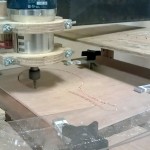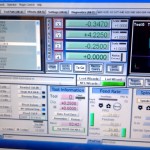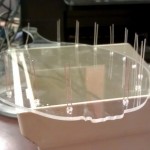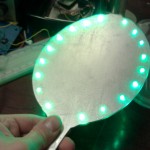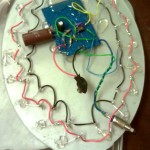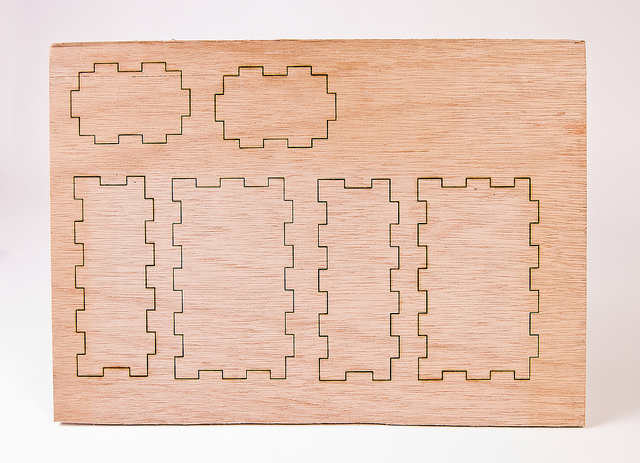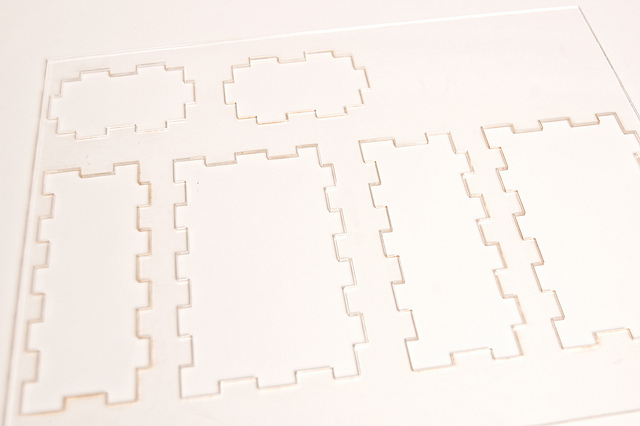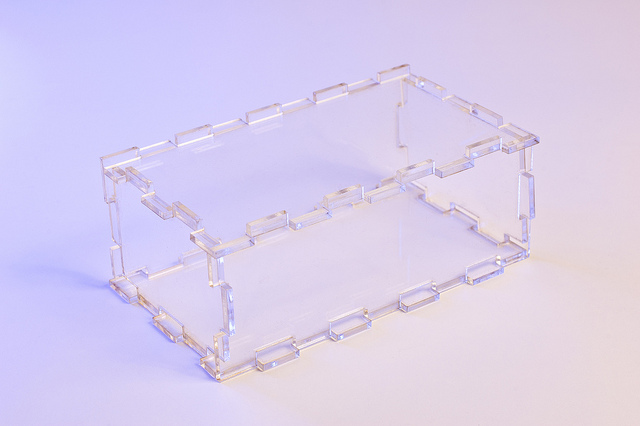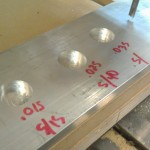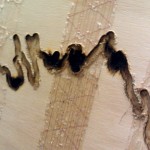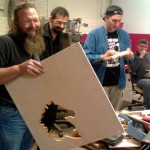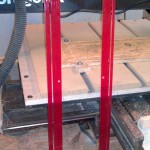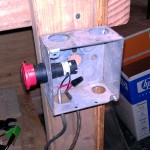My sister is a Theater Manager at the Patel Conservatory in Tampa, FL. About two weeks ago she texted me and asked if I could make her a prop she needed for an upcoming production. “How keen would you be on making me a mirror for “Beauty and The Beast,” she said. “They want a mirror that lights up and sparkles like the one from the movie.” Even with limited experience just tinkering around, I knew I could do something fairly easily, so I agreed and got to work.
I combined two different circuits (a 555 timer to flash and a RC circuit to fade) and built a wooden frame with acrylic plates for the front and back. The wood and plastic were CNC-milled, then sanded and painted before the electronics were installed and glued into place.
The result was a fairly decent-looking, shiny, light-up hand mirror with a small thumb button on the right side that flashes 16 bright green LEDs when pressed. It all runs off a single 9-volt battery and the back can be unscrewed to replace it should it ever die.
Total build time from start to finish was probably close to 15 hours over the course of one week. The play was Thursday, July 19th and from what I’ve heard, it was a great success. I’ll add pictures from the performance if I get some.

